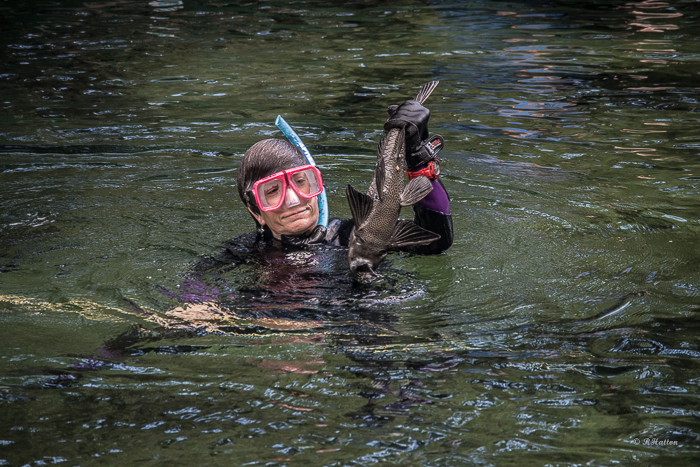The Brown Center invites you to our Faculty Spotlight on Wednesday, November 18th at 12:00 PM on Blackboard Ultra. The spotlight series is a showcase of research, creative inquiry, and other scholarly engagement of the campus community. Stop by and learn about the research of our talented Stetson community!

Dr. Melissa Gibbs – Professor of Biology and Director of Aquatic & Marine Biology
Department of Biology
Impacts of an Invasive Armored Catfish in Volusia Blue Spring
Most people assume that invasive species have their primary impact on native species through competition for food or space, predation, and ecosystem disturbance. Although scientists have long been interested in nutrient contributions by invasive species (via excreta (urine) and egesta (feces)), the scope of the impact does not seem to have been fully realized. We have been investigating the ecological impacts of the extensive fecal deposits made by an invasive armored catfish (Pterygoplichthys disjunctivus) in Volusia Blue Spring for over 10 years, and in 2016 published a study (Rubio et al.) that clearly demonstrated that the ecological impacts of these fecal deposits were likely much more significant than anyone might have thought; just imagine more than half a million cm3 of feces in the spring run at any one time! The feces were essentially little nutrient “bombs” containing digested algae (fertilizer), live undigested algae, sand (weighing it down), and encased in a thin mucous sheath. We documented these deposits as lasting in the spring run for over 2 weeks and leaching out measurable amounts of nitrates and phosphates into the surrounding water – in other words, creating nutrient hotspots. Although the amounts of nitrates and phosphates leaching from individual fecal strands are small, once scaled up to the volume of feces we have found in the entire spring run, it cannot be ignored as a likely significant contributor to the spring run, perhaps even comparable to anthropogenic contributions. Today I will provide an update to the 2016 study and talk about what we have found and what we are still investigating.
Melissa Gibbs has been interested in marine biology since watching a National Geographic special on deep-sea hydrothermal vents when she was 13. Her bachelor’s and master’s degrees were earned on the central California coast, where she focused on deep-sea fish sensory systems. She attended the University of Delaware for her PhD, where she studied the visual systems of goldfish, and followed that with a post-doc position studying the lateral line system in fish and amphibians at the Scripps Institution of Oceanography. Since arriving at Stetson, Gibbs has focused her research interests on spring fish ecology, particularly the biology and impacts of a non-native armored catfish.
